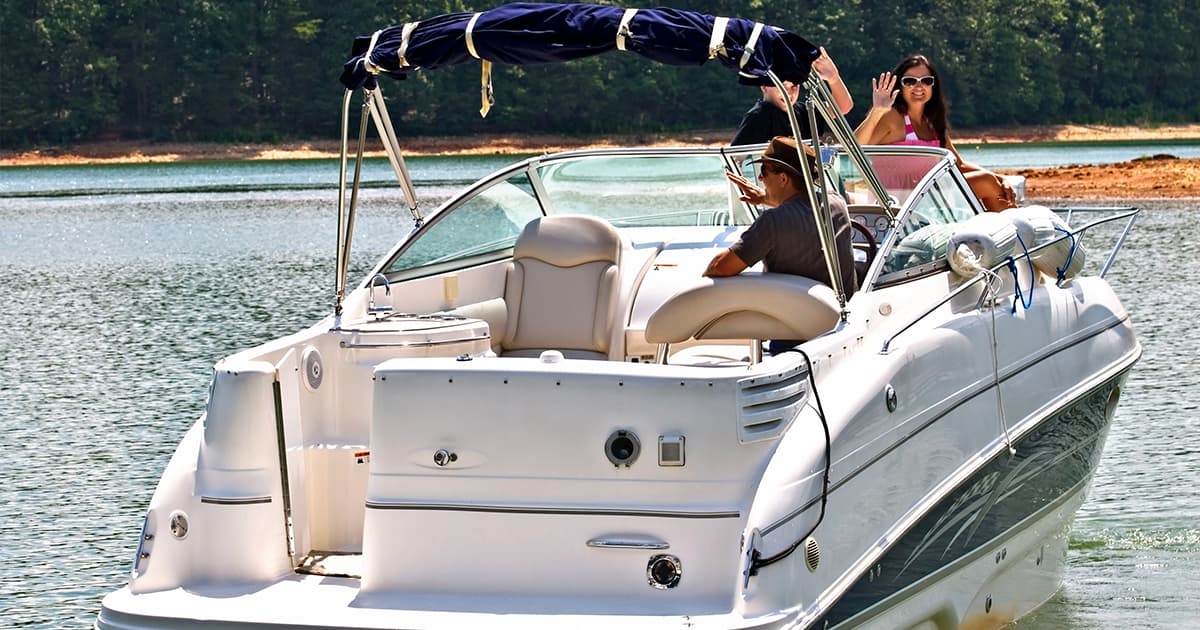How to Boat Safely

Boating is a favorite pastime of many Canadians. To boat safely, it’s important to remember that driving a boat, just like a car or motorcycle, comes with risks. Minimize these risks and enjoy your time on the water by being prepared and staying safe.
Before you leave
Make sure to be prepared for your boating trip before you head out by obtaining your Pleasure Craft Operator Card, knowing what supplies you will need, being aware of boat safety, and insuring your boat.
Get your Pleasure Craft Operator Card
You are legally obligated to have a Pleasure Craft Operator Card (PCOC) to operate a boat in Canada. You can get it by passing a boating safety course online or in person. Transport Canada has a list of accredited course providers here: Find education resources for recreational boaters (canada.ca)
Have Boat Insurance
Boat insurance protects your boat, its occupants, and others you will meet on the water. Although it is not mandatory, it is a good idea to purchase it. Your boat could be damaged or caused to sink by rocks or debris, you could be in a collision with another boater, your boat or belongings could be stolen, or you could need emergency towing if your engine stalls. Boat insurance covers these and other unforeseen events.
If you are renting your boat, ask the rental company for boat insurance options. If you need insurance for your boat, talk to your Western Financial Group boat insurance expert.
There are differences in boat insurance between insurers, but it typically includes:
- Protection and indemnity, which provides liability insurance that protects you from claims of liability for bodily injury and property damage. It helps with legal fees and settlements if you are found to be at fault.
- Medical payments, which cover expenses related to an accident on your boat
- Hull and machinery coverage, which covers damage to your boat and equipment
Your Western boat insurance expert will answer any questions you may have about boat insurance.
Bring safety equipment
You are required to have safety equipment on your boat. The minimum requirements are:
- A Canadian-approved lifejacket or flotation device in the correct size for each passenger
- Canadian-approved type A, B or C flares or watertight flashlight
- A buoyant heaving line that is at least 15 meters long
- A sound signaling device
- A class 5 BC fire extinguisher
- A bailer or manual water pump
- A manual propelling device or an anchor with at least 15 meters of chain, cable, or rope
Bring essential supplies
You should also have:
- Water
- A first aid kit
- Hat
- Sunscreen
- Dry clothing
- Knife
- Waterproof matches
- Snacks
- Sunglasses
Know water safety rules
Even if you do not plan on swimming, be aware of water safety.
- Always wear a life jacket.
- Supervise children around water.
- Do not consume alcohol or other substances.
- Know how to swim and teach your kids how to swim.
- Go boating with a buddy.
Check the weather
Monitor the weather leading up to your trip. Weather conditions can change quickly, so make sure it is safe to go boating before you leave.
Onboard your boat
Common sense goes a long way when you are out on the water.
Wear a life jacket
One of the most obvious boating safety tips is to make sure everyone on board is wearing a life jacket that fits them.
Do not drink and drive
According to the Canadian Red Cross, almost 65% of boating-related deaths involve alcohol. The sun, rocking motions of the boat, and wind amplify the effects of substances and it is illegal to drive a boat while impaired.
Do not go into unfamiliar waters
Tides and currents can change, so stick to familiar territory. If you are unprepared, you and your passengers could be in trouble quickly.



